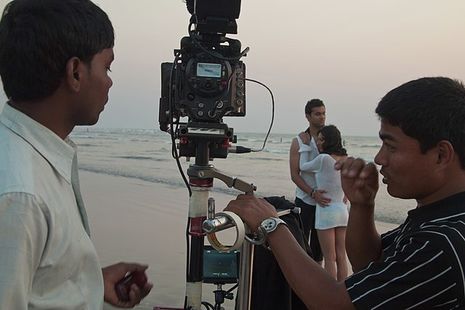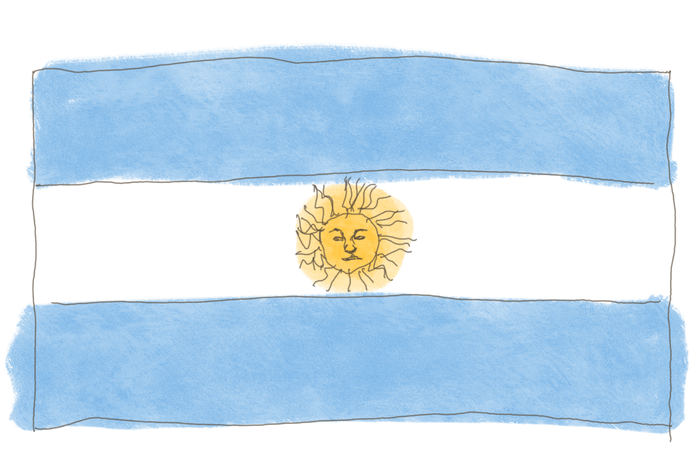Global Frames: India
Jaipreet Lully introduces you to some of the gems of Indian cinema

When people think of Indian cinema, I can guarantee that minds will immediately go to Bollywood; the melodrama, the lengthy musical sequences and costume changes, the classic trope of love at all costs. This is certainly the popular view of Indian cinema, but also just a piece in the diverse plethora of stories it has to offer. In the past few decades, we have seen a beautiful emergence of regional film genres which are matching the success of Bollywood, from Pollywood to Tollywood, which saw success when the film RRR won the 2023 Oscar for best original song. My own Punjabi heritage has allowed me to explore Indian cinema in all its forms; from 90s rom-coms and Shakespearean adaptations, to period pieces and gritty dramas. Below is a whistlestop guide to its gems, to prove that it’s not just escapist glitz and glamour.
“the melodrama, the lengthy musical sequences and costume changes, the classic trope of love at all costs”
Dilwale Dulhania Le Jayenge (1995)
This is the perfect film for newcomers, which follows young Simran and Raj, who fall in love whilst interrailing across Europe (one for the ‘gap yah’ students), and must find a way back to each other in spite of cultural expectations. Both Kajol and Shah Rukh Khan, in lead roles, are classic, recognised faces of Bollywood cinema, whose comedic quips and chemistry make for a masterful feel-good rom-com. But it’s the quintessential Bollywood themes of young love at odds with duty, and focus on the Indian diaspora in England which make it special.
Omkara (2006)
One for the English Literature students is Omkara, a Bollywood adaptation (dare I say the best adaptation) of Shakespeare’s classic, Othello. The rural setting of Uttar Pradesh, the melancholic soundtrack, and genius cultural quirks such as replacing the handkerchief with a kamarband (waist chain) really show the universality of Shakespeare; passion and tragedy are especially fitting in a Bollywood setting.
“we mustn’t forget the underrepresented, independent films that depict individual, regional experiences”
Devdas (2002)
I can’t delve into the classics of Indian cinema without mentioning director Sanjay Leela Bansali, whose opulent productions like Devdas transport viewers back to an era of regal luxury. In fact, the most famous costume worn in the film by a jilted courtesan, Chandramukhi, was a bejewelled green lehenga approximately priced at over a million pounds! Set in 1900s Bengal, the story follows Devdas, a wealthy man who pursues forbidden love with his childhood best friend, Paro, in the face of societal expectations. Tragedy and glamour play out beautifully in this film, and the poignant musical numbers make for a captivating watch (if you’re not still plagued by the poignancy of week 5 blues…).
Regional Punjabi film: Sajjan Singh Rangroot (2018) and Buhe Bariyan (2023)
Above I’ve mentioned well-known films in the commercialised genre of Bollywood, but we mustn’t forget the underrepresented, independent films which depict individual, regional experiences with a gritty realism. Sajjan Singh Rangroot is a prime example of why Indian cinema cannot be generalised; its harrowing focus on the Sikh soldiers fighting for Britain in WW1 sheds light on the abandoned histories and heroism of minorities under colonialism. Buhe Bariyan is another which admirably subverts Bollywood motifs like family honour, instead exposing domestic violence and showcasing sisterhood. It refreshingly demonstrates that it’s not just Punjabi youth, but older women too who can protest against ingrained patriarchy. These, I feel, get to the root of India’s soul and innermost conflicts, which are hard to face but crucial to its identity.
 News / Cambridge student numbers fall amid nationwide decline14 April 2025
News / Cambridge student numbers fall amid nationwide decline14 April 2025 News / First candidate to announce chancellorship bid pledges to tackle bullying 12 April 2025
News / First candidate to announce chancellorship bid pledges to tackle bullying 12 April 2025 Lifestyle / First year, take two: returning after intermission14 April 2025
Lifestyle / First year, take two: returning after intermission14 April 2025 News / Rowing row continues as Oxford and Cambridge scrap women’s trial race9 April 2025
News / Rowing row continues as Oxford and Cambridge scrap women’s trial race9 April 2025 News / PETA urges Cambridge dictionary to change ‘derogatory’ rat definition11 April 2025
News / PETA urges Cambridge dictionary to change ‘derogatory’ rat definition11 April 2025




